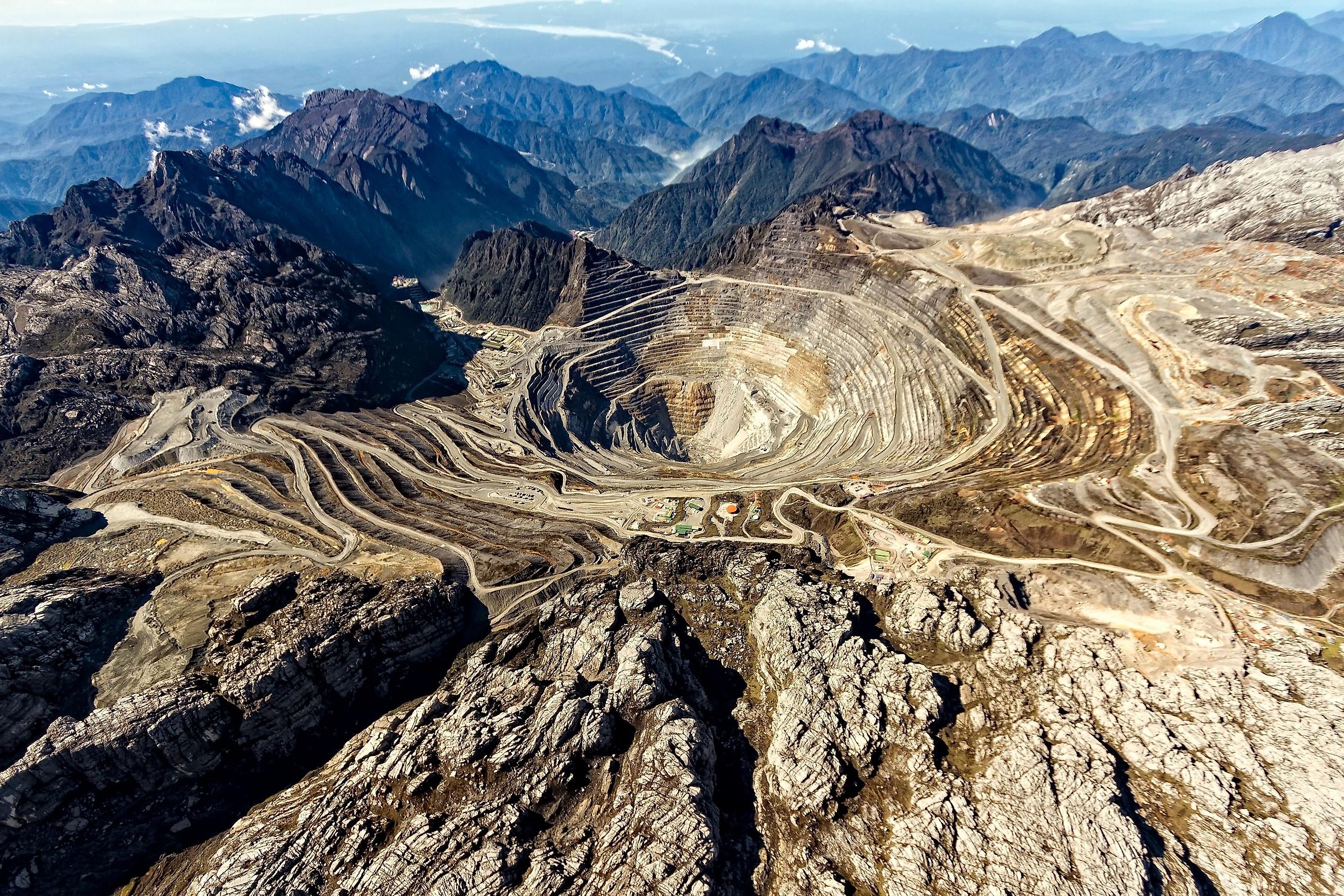
The 10 Largest Gold Mines In The World
Gold, a stunning yellow metal, is the epitome of value in human society. It is omnipresent in the world, whether it be in the form of gold coins used in ancient societies or the endless jewelry made from this precious metal. Gold is not only prized for its lustrous beauty, but it is also important for chemical reactions, investments, finance systems, and even medicine. So why is this precious metal so important and sought after? The short answer is its rarity. But there is more to it than that! Let's take a look at some interesting facts and features of gold:
- Gold is one of the rarest precious metals in the world, with an average concentration of 4 parts per billion in the earth's crust, which is rarer than diamond.
- Even though humans have mined it for thousands of years, the entirety of mined gold could fit in a cube with sides of 22 m (72 feet).
- Gold is one of the densest metals known to man and is also a great conductor of both heat and electricity.
- Gold is extremely malleable and lustrous, which makes it ideal for all kinds of jewelry.
- Ode to its rarity, gold is one of the most expensive precious metals, with an average price per gram of over $50.
- The earth's crust forms gold through a hydrothermal process induced by great heat. Hence, it is mostly found underground in large deposits.
It is thanks to these notable characteristics that the metal has been in use for thousands of years. It even transcends into mythology, as you might have heard of the great king Midas, a man who could turn everything he touched into gold. While this may or may not be true, scientists believe gold is the first metal employed by humans, with the earliest traces dating back to 40,000 BC. Since then, gold has seen dozens of applications, from being used in crowns in 370 BC to currency during the Ancient Greek and Roman empires.
As its applications continue to grow, the rarity and price of gold keep going up. To this end, mines have been set up across the globe to quench today's demand. But, with so much competition, which country or mine produces the most of this extraordinary metal? Let's take a look!
1. Nevada Gold Mines, United States of America - 3,311,000 ounces (93.5 tonnes)
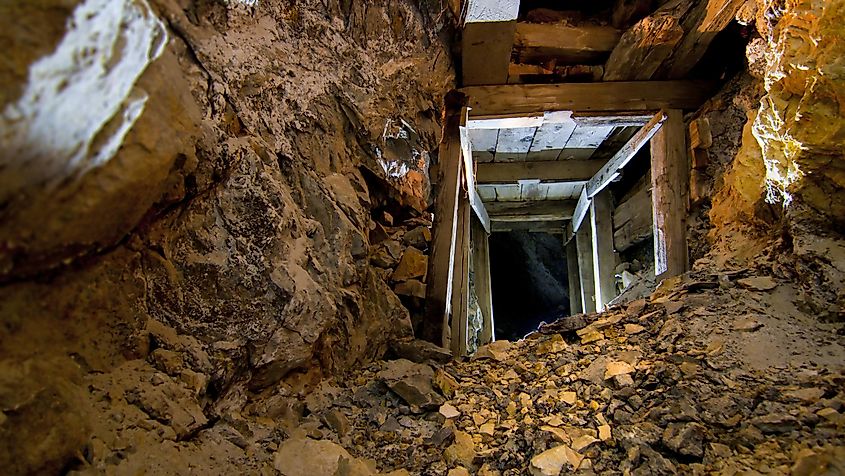
One of the newest mines on this list, Nevada Gold Mines, began operation on July 1, 2019, as a joint venture between Barrick Gold and Newmont. The two gold mining conglomerates combined a large portion of their assets in Nevada, US, to create the largest gold-producing complex in the world. To this end, the mining complex boasts a whopping production of 3,310,000 ounces, nearly 3% of global production. This is churned out of 7 mining operations which - Carlin, Cortez Gold Mine, Goldstrike mine, Long Canyon, Phoenix, Turquoise Ridge, and Twin Creeks Mine.
While current production is high, the Nevada Gold Mines are facing uncertainty regarding future mining. Even with more than 100 million ounces (2834 tonnes) of remaining reserves, factors such as price, demand, and regulations may lead to reduced profitability. Thankfully, as of 2023, the mining complex is still the largest in the world, with approximately 7,000 employees working in it.
2. Muruntau, Uzbekistan - 2,990,020 ounces (84.7 tonnes)
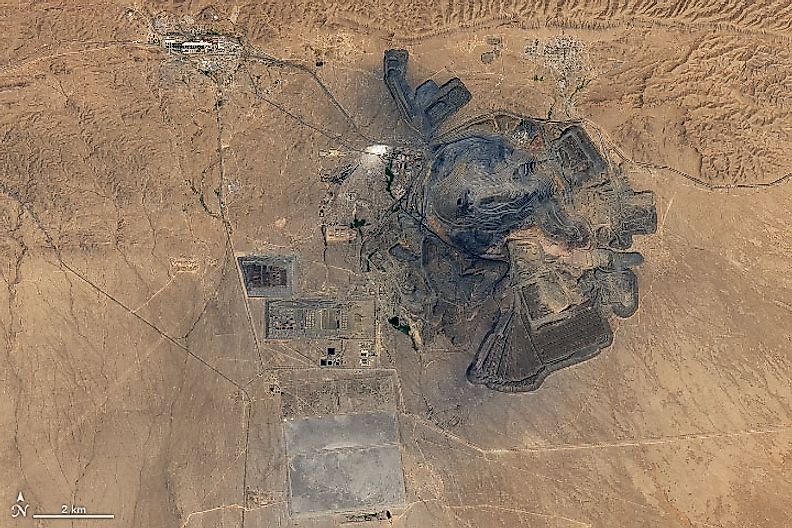
Built on the Muruntau gold deposit in the Kyzylkum Desert of Uzbekistan, the Muruntau Gold Mine is the world's largest open pit mine. With an immense depth of 600 m and length exceeding 3 km, it is a massive endeavor. Subsequently, the mine produces an astonishing 2,990,020 ounces of gold per year from one individual mining establishment. As the previous Nevada Gold Mines is a collection of mines, many people consider Muruntau to be the largest individual mine in the world.
The Muruntau mine also holds immense history, having opened in 1969 by Navoi Mining and Metallurgy Combinat. Since then, it has made up the majority of Uzbekistan's gold production, reaching 80% of total production in 2021. Along with being a major producer in the past, the Muruntau mine has an estimated reserve of 71,400,000 ounces (2024 tonnes) of gold. This is enough for more than 20 years of mining at the current rate, so Muruntau is here to stay!
3. Grasberg, Indonesia - 1,370,000 ounces (38.8 tonnes)

Although it may produce less than half as much as the Muruntau mine, Grasberg is a massive mine in Indonesia. Opened in 1972, the 50-year-old mine is home to one of the world's largest reserves of gold. To this end, Grasberg mine produced 1,370,000 ounces of gold in 2021, with numbers rising since. Gold is not the only metal mined here, as it also boasts large copper and silver reserves. The copper reserves are so large that Grasberg had a 2022 copper production of 1.5 billion pounds, which is one of the largest in the world.
In terms of future sustainability, Grasberg is quite sound. As it is a joint venture between the American firm Freeport-McMoRan, the Papua government, and the Indonesian government, it is unlikely to face political problems. There are also 26.3 million ounces (745.6 tonnes) of proven gold reserves as of 2022, which is enough for another 15-20 years of mining at this rate.
4. Olimpiada, Russia - 1,184,068 ounces (33.6 tonnes)
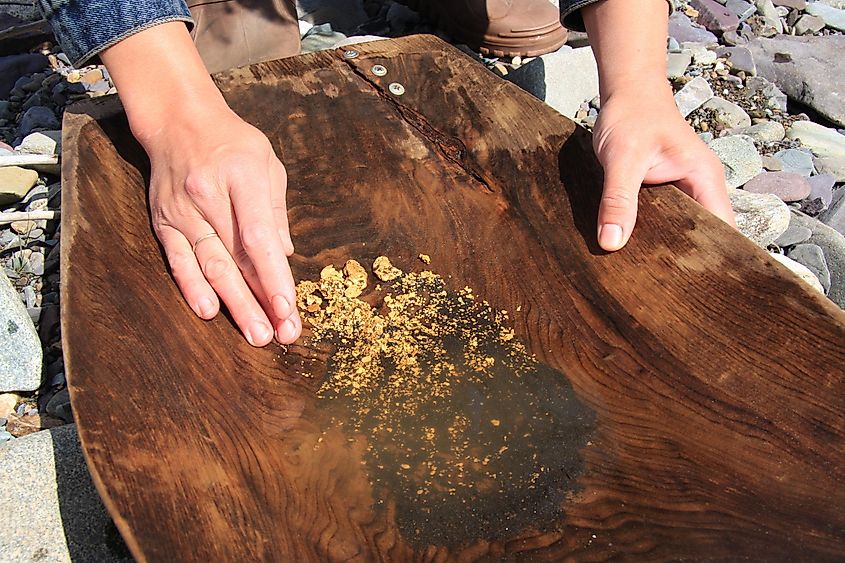
Olimpiada is the largest gold mine in Russia and the fourth largest in the world. It is located in Krasnoyarsk Krai and is owned by Plyus, one of the top 10 gold mining companies in the world by output. Backed by a massive investment and processed at three mills, the mine produced 1,184,068 ounces in 2021. In addition to income from gold, the mine is also a major source of employment in the region. With a conventional shovel-and-truck open-pit operation, it currently employs more than 3,200 people. These employees are here to stay as Olimpiada has confirmed 19.3 million ounces of proven reserves along with 46 million ounces of indicated resources.
5. Pueblo Viejo, Dominican Republic - 814,000 ounces (23 tonnes)
Puble Viejo Mine is an open-pit gold and silver mine situated in the Sanchez Ramirez Province of the Dominican Republic. It was opened in 2012 by a subsidiary of Barrick Gold Corporation and Newmont Corporation, who also own the Nevada Gold Mines. Bolstered by significant financial backing, Pueblo Viejo is the largest gold mine in Latin America, producing 814,000 ounces of gold in 2021. The mine is also the largest taxpayer in the Dominican Republic, representing 2% of the country's GDPGDP. Based on current estimates of gold reserves, its operation should continue until 2041.
On the flip side, the Pueblo Viejo mine has seen significant backlash due to environmental reasons. When it was initially constructed, the owners spent $75 million to remediate environmental damage from previous mining operations on the reserve. However, since then, the mine has been a major source of pollution, creating approximately 6.7 billion cubic meters of toxic wastewater yearly. According to locals, this waste has led to health issues, loss of agricultural land, and death of livestock. Consequently, an expansion proposal for the mine in 2019 faced strong resistance from local communities.
6. Kibali, DRC - 812,000 ounces (23 tonnes)
Just 2,000 ounces short of Pueblo Viejo is the Kibali Gold Mine in the Democratic Republic of Congo. It produced 812,000 ounces of gold in 2021 with a combined open pit and underground mine complex. This mining complex is one of the largest in Africa and opened in 2013 with a development cost of $1.7 billion. In the following years, its ownership changed multiple times due to partnerships and sales. As of 2023, the mine's owner is Kibali Gold Mines, a subsidiary of Barrick Gold, and two other mining companies.
The Kibali Gold mine has exceeded expectations, producing more gold than initially projected. Along with being profitable, the company has installed a hydroelectric power plant with plans for more to manage power requirements. Thanks to this, it is in accordance with its plan to operate for 18 years, which would be until 2031.
7. Cadia, Australia - 764,895 ounces (21.7 tonnes)
Australia, the second largest producer of gold in the world, is home to the Cadia Mine, a series of large underground and open-cut gold and copper mines. Located in the Cadia Valley, the mine is vital for the region as it has provided employment for more than 20 years. Officially opened in 1998, Cadia Mine produced a solid 764,895 ounces of gold in 2021, giving it the 7th spot on this list. This rate of production is expected to continue for at least 5-10 more years, according to current forecasts.
Unlike many mines on this list, Cadia mine is wholly owned by a subsidiary of Newcrest Mining Limited, Australia's leading gold mining company. Along with this mine, Newcrest manages several others and is a major reason for Australia's high gold production of 10 million ounces.
8. Lihir, Papua New Guinea - 737,082 ounces (20.9 tonnes)
The Lihir mine in Papua New Guinea's Niolam Island is another mine owned by Australia's Newcrest Mining Limited. Part of their international expansion, it is the largest mine in the country, boasting a gold production of 737,082 ounces in 2021 alone. To manage this output, Lihir mine employs a whopping 4,500 people, which is a major boost to the local economy. They have also managed to take large steps toward sustainability and aim to continue to progress further. Aided by a large estimated reserve of 45 million oz of gold, Lihir has much room to grow.
9. Canadian Malartic, Canada - 714,784 ounces (20.3 tonnes)
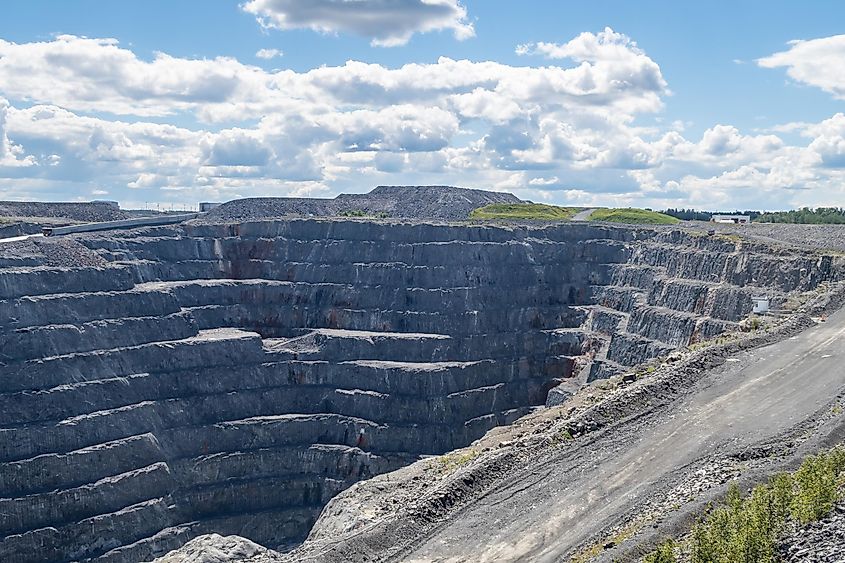
As the name suggests, the Canadian Malartic mine is nestled in Quebec, Canada. It is the largest operating gold mine in the country and holds immense history. This is because the gold deposit was discovered a century ago in 1923. However, there were no large-scale mining activities on it until the opening of the Canadian Malartic mine in 2011. Initially started by Osisko Mining, this mine later came under the ownership of Yaman Gold and Agnico-Eagle Mines and is now solely owned by the latter. In 2021, the Canadian Malartic mine produced 714,784 ounces of gold, making it the 9th largest producer in the world. According to estimates, the mine will continue operating until the 2030s at multiple sites.
10. Boddington, Australia - 696,000 ounces (19.7 tonnes)
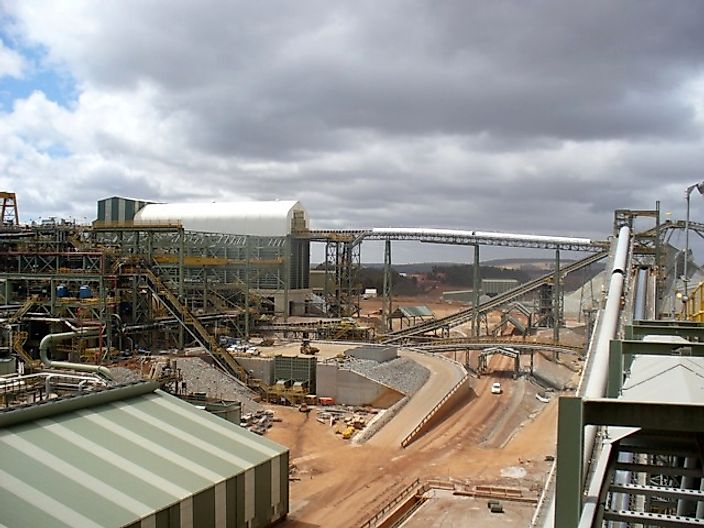
Boddington Mine, located near Boddington in Western Australia, is an open-cut gold and copper mine and the second Australian entry on this list. First opened as a joint venture in 1987, the mine operated until 2001, when known oxide ore resources had depleted. However, a massive new reserve was discovered, which began the construction of an expanded mine on the site. The new Boddington mine opened in 2009, and by then, Newmont Goldcorp had purchased shares to become the sole owner. Since its opening, the mine has produced a steady amount of gold, never falling below 650,000 ounces. In 2021, the total production was 696,000 ounces, which makes it a close competitor for Australia's largest gold mine. The mine is expected to continue operation until 2036, at which point the known gold reserves would have depleted.
The Largest Gold Mines in the World (2023)
| Rank | Mine | Location | Production (ounces) | % of global production |
|---|---|---|---|---|
|
1 |
Nevada Gold Mines |
U.S. |
3,311,000 |
2.9% |
|
2 |
Muruntau |
Uzbekistan |
2,990,020 |
2.6% |
|
3 |
Grasberg |
Indonesia |
1,370,000 |
1.2% |
|
4 |
Olimpiada |
Russia |
1,184,068 |
1.0% |
|
5 |
Pueblo Viejo |
Dominican Republic |
814,000 |
0.7% |
|
6 |
Kibali |
Democratic Republic of the Congo |
812,000 |
0.7% |
|
7 |
Cadia |
Australia |
764,895 |
0.7% |
|
8 |
Lihir |
Papua New Guinea |
737,082 |
0.6% |
|
9 |
Canadian Malartic |
Canada |
714,784 |
0.6% |
|
10 |
Boddington |
Australia |
696,000 |
0.6% |
Gold Mining And Global Reserves
Due to its increasing demand, gold mining continues to rise across the globe. Along with this list of the ten largest producers, there are hundreds of mines spread across the globe mining non-stop. Even on this list, the ranks change, and new mines join yearly. While this expansion is great for technology and development, the amount of gold we have is limited. According to scientists, there are only around 50,000 tonnes of below-ground reserves still remaining. Considering how humans have mined about 200,000 tonnes in total, this is not a lot. To solve this, gold mines are utilizing new technologies such as AIAI and robotics to access deeper reserves and make mining more efficient. However, even so, it is important to manage our usage as a society so this precious metal doesn't run out in the next 30 years.











